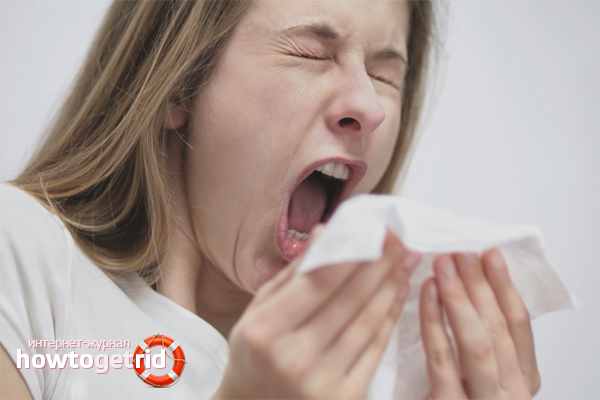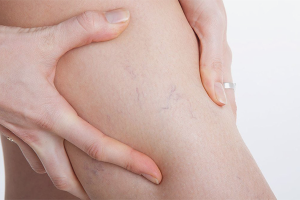The content of the article
A person is faced with dust every day. After cleaning the house, many have watery eyes, I want to sneeze. This is how dust allergy manifests itself. This is the most common type. Very often, various diseases arise due to it, which are not easy to cope with. Therefore, it is necessary to completely get rid of allergic manifestations. The article will talk about what is the causative agent of allergies, what are its symptoms and methods of dealing with it, how to prevent.
Why is there an allergic reaction to dust?
Many people suffer from allergies. It arises due to the dirty environment, the use in the household sphere of low-quality household materials, food dyes. Often, some medications are also the cause. Climatic conditions, genetic predisposition, diet and much more - all this affects the formation of an allergic reaction.
The following causes of an allergic reaction to household dust are distinguished:
Genetic heredity. If one of the parents suffers from a similar allergy, then the likelihood that the child will manifest it is 30%. The presence of both parents, this percentage increases to 60%;
Household appliances and stuff. A huge amount of dust accumulates on interior items during the day, it is simply impossible to completely get rid of it. This is irritants, as a result of which allergy manifests itself;
Weakened immunity. The reason may be poor nutrition, bad habits and lack of vitamins in the diet.
If allergic manifestations of dust occur, it is necessary to establish its source. After identifying this substance or organism that triggers a reaction in the human body, the correct treatment is established.
Micro ticks are considered the most important allergen, which is simply impossible to consider. They call him bed, he eats dead human cells. Ticks do not bite, do no harm, but only contribute to the appearance of allergies.
The causes of allergies to dust are many. In itself, it is already an irritant to the human body. Dust consists of many particles of waste that a person inhales with air. An allergy to household dust occurs in those places where there are a huge number of books, soft toys. Almost all objects in the house accumulate dust on themselves, so anything can cause allergy.
Symptoms of an allergy to household dust
For every person, allergy symptoms may vary. All of them are clearly expressed and manifest themselves extremely unpleasantly. The main ones are:
Rhinitis. The most common symptom previously called hay fever. The disease is not severe, but it causes a lot of inconvenience. It manifests itself in the form of sneezing, transparent discharge from the nasal cavity, headache and lacrimation.
Recognizing rhinitis is easy: first it starts tickling in the nose, then smoothly transitions into a prolonged sneezing. If treatment is not started on time, it can develop into asthma. The reaction to dust can occur immediately, or maybe later, after a few hours.
Conjunctivitis. An equally common symptom is found in 15% of the population. Squirrels turn red, eyes watery, there is a burning sensation and itching, and the eyelids swell over time. Items seem blurry, inaccurate. Conjunctivitis can result in exacerbation - damage to the cornea.
Asthma. The most severe allergic reaction to household dust.When an irritant enters the respiratory tract of a person, the struggle of the immune system with the irritant begins. The muscles contract, coughing attacks begin. The respiratory tract is filled with mucus, inflamed. A person begins to breathe more often, more difficult. As a result of this, shortness of breath appears, a feeling of heaviness in the chest.
The onset of asthma should not be confused with bronchitis. With an incorrect diagnosis and treatment, this is fraught with negative consequences, up to a fatal outcome.
Also, an allergy to dust can be manifested by a rash throughout the body, circulatory disorders, general fatigue, drowsiness, frequent headaches and migraines. Diarrhea, urticaria, problems with the gastrointestinal tract are also possible.
Symptoms of dust allergy can occur both within a few hours, and after a couple of days, all individually.
Varieties of dust allergies
There are several types of it:
- For household dust. The most common type. The air in a house or apartment contains a huge amount of dust. It consists of particles of pollen, dead cells of the epidermis, mold and other irritants - food mites, which are called saprophytes. They live in bedding, on upholstered furniture and the eye they are not visible, you can see them only under a microscope;
- Book dust allergy. On the roots, pages and covers, a lot of dust accumulates. Sometimes mold may form that cannot be seen. All this is a prerequisite for the occurrence of an allergic reaction. At home, it may not appear, but after visiting the library it may occur. This fact is explained by the fact that with a small amount of dust, the body copes with irritants, but with its large accumulation, histamine is released, as a result of which an allergy occurs;
- On building dust. Such a reaction is manifested in places of construction work, material stores. The composition of the dust is diverse: for example, a person may be allergic to wood, but not to metal.
How to get rid of dust allergies
Regardless of the type of allergen, treatment should begin immediately after the reaction to the dust. To get rid of the symptoms, you need not only to use medicines, but also resort to alternative methods, which are more effective. Such funds are more gentle for the body, do not cause addiction and side effects.
Traditional medicine has a huge number of methods that help get rid of dust allergies in the shortest possible time. When choosing a product, it is necessary to consider the individual tolerance of the components.
- Tincture of duckweed and vodka. You need to take 20 grams of grass, wash it and pour vodka (100 ml). Leave to infuse for a week, after which take the broth 4 times a day for 30 days: mix 20 drops of tincture with half a glass of water.
- Burdock roots and dandelion. Take 100 grams of herbs and pour them with 1.2 liters of water. Insist 10 hours, then boil the tincture and take chilled before eating. Drink half a glass for several months.
- 100 grams of celandine pour 800 ml of boiling water, let it brew for about 6 hours. To use twice a day: before breakfast and dinner, ¼ cup.
- Baths with herbs. It is equally useful to bathe in herbs such as string, chamomile, and celandine. The grass must be doused with boiling water, insisted on a water bath and filtered, added to the bathroom. So do lotions.
To exclude body contact with allergens, it is necessary not to keep upholstered furniture, carpets in the apartment, refuse aerosols. Also do wet cleaning several times a week.
The body can be cleaned with activated carbon. For 7 days, drink 1 tablet for every 10 kg of a person's weight. To increase immunity, consume more dairy products, consume less salt.
Before proceeding with the treatment of allergies, it is necessary to consult a doctor.
Dust allergy medications
Treatment should begin with antihistamines. One of them is Allergodil. It helps to cope not only with allergy symptoms, but also helps to get rid of it. The drug in the form of a spray is injected into the nose, thereby killing irritants - allergens. It must be taken within a few weeks.
Enterosgel is another effective medicine in the fight against dust allergies. The drug positively affects the body, removing harmful substances from it.
It should be noted that no medicine is able to completely get rid of allergic influences. Medications can only alleviate symptoms and support the body.
Preventive measures
Prevention involves the cessation of human interaction with the causes of allergies. Less contact with animals, dust and mold in the apartment. To get rid of ticks, use special tools. Review the first aid kit and discard the medicines whose expiration date is expired. Keep as few carpets, upholstered furniture and toys as possible. It is better to keep things in the closet in the closet, it is better not to keep pets.
Wet cleaning every day, and once a week - general. In this case, it is necessary to carefully knock out the carpets, sweep away the dust from the furniture. You also need to change the linens more often. During all these preventive measures, you need to close the nasal cavity so that the dust does not get there.
Thus, dust allergies can cause anything. If symptoms occur, you should immediately consult a doctor to identify the source of allergies. Timely handling will help get rid of the problem and avoid complications. An experienced doctor is required to conduct an allergen test and prescribe special medications. At home, you can use folk remedies that are more effective than medicines. By following the above tips, you can avoid the occurrence of dust allergies.
Video: allergy medications











Submit